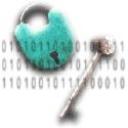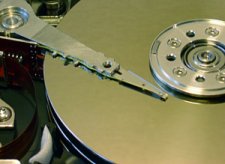 Due to the recent problems associated with the loss of government laptops and security breaches such as the incident where the laptop of a Federal Trade Official was reported to have been compromised by reportedly Chinese operatives while on a trip overseas, the US Federal government has begun to encrypt their laptops in hopes of bolstering their security to prevent such security risks in the future. Let us just hope that they do it fast enough for no one wants to get their personal and financial information released online or obtained by enemies of the state (terrorists in layman’s terms). Of the estimated 2 million laptops the US government and the many agencies have, only 800,000 have had the encryption system developed by the Department of Defense and the General Services Administration.
Due to the recent problems associated with the loss of government laptops and security breaches such as the incident where the laptop of a Federal Trade Official was reported to have been compromised by reportedly Chinese operatives while on a trip overseas, the US Federal government has begun to encrypt their laptops in hopes of bolstering their security to prevent such security risks in the future. Let us just hope that they do it fast enough for no one wants to get their personal and financial information released online or obtained by enemies of the state (terrorists in layman’s terms). Of the estimated 2 million laptops the US government and the many agencies have, only 800,000 have had the encryption system developed by the Department of Defense and the General Services Administration.
Encryption is one of the most secure way pf keeping data safe from unauthorized access which renders them useless without the proper software or security keys. Comparable to the dial combination on a bank vault, the encryption process turns files onto a useless bundle of information that cannot be read or used for other purposes.
All this effort to boost security of information that is gathered and collated by the various agencies and even private businesses that have ties with the government though contracts have had their computers encrypted to ensure the information they handle and use stays secure and out of the hands of criminals who aim to use them against the government.
Choosing which data encryption to use
 Often we think of security in terms of applications that can be used to safeguard our data, but there can always be different approaches to the same problem. Encrypting the data in your hard drive may be the key to keeping it safe in these days of laptop theft.
Often we think of security in terms of applications that can be used to safeguard our data, but there can always be different approaches to the same problem. Encrypting the data in your hard drive may be the key to keeping it safe in these days of laptop theft.
Data encryption for hard drives can come in two forms. You can either use a software to encrypt your data, or have a drive that required password identification before gaining access to the files inside. The first method can be performed with a selection of open source and licensed software. The files are protected even when the Operating System is not on. This works in different ways. Some software create a virtual drive inside the hard drive to store the data. the virtual drive will take up an allotted amount of space in the drive, but it cannot be accessed unless the password or set of passwords have been given. This type of data encryption can also be performed on drives that had no form of security encryption originally like the computer you’re currently or even thumb drives.
Hard drives with encryption has been available for the past year, most often in the form of external drives that can be brought to different places and handled by more than one user. These hard drives operate with full encryption, where the data in the whole disk is encrypted. Some of them combine password identification with biometrics to give double security to the files inside them. These drives come with a chip containing special software that does the decrypting and encrypting without taking too much time. The problem with this method is that if the password is forgotten, the data can’t be recovered. Seagate had recently announced that they will be shipping hard drives with an improved full disk encryption they call DriveTrust on January. These two methods will protect the files in the hard drive, and it’s only a matter of choosing which suits you best.
[tags]data encryption, data, security, drive encryption[/tags]